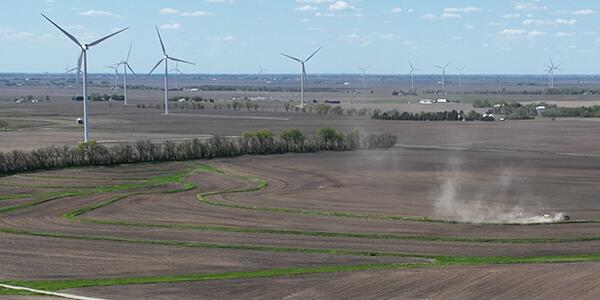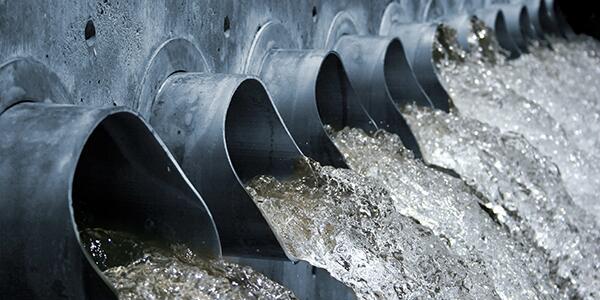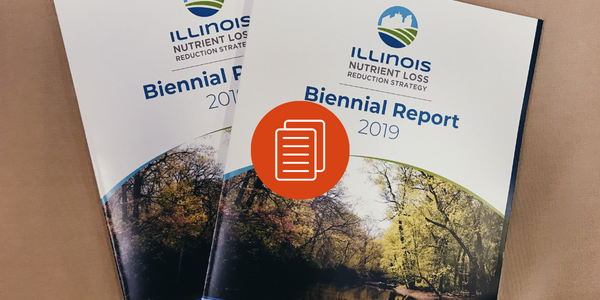Why is nutrient pollution a problem and how can we help?
Plants and animals need nitrogen and phosphorus to survive. These nutrients are natural parts of aquatic ecosystems, but when there is an excess of these nutrients in bodies of water, they contribute to an overgrowth of aquatic plants and harmful algal blooms . When the algae decomposes, it uses up oxygen in the water, causing hypoxia, or low oxygen, which harms the entire aquatic ecosystem.
Nutrient pollution can also affect the drinking water supply and may require the installation of costly drinking water treatment equipment. The impacts are widespread - algal blooms threaten public health, lower property values, hinder recreational opportunities, and harm local businesses, and tourism.
Practices can be put in place to reduce or stop nutrient pollution that benefit each of us and the ecosystems of the world.
It all starts with how water moves.
A watershed is the land where all water drains across the surface or underground toward the nearest water body. In any region, all the water eventually drains to ponds, rivers, lakes, or oceans. Even though watersheds come in different sizes, what happens in one region can impact everything downstream.
In Illinois, most of the state's land flows into the Mississippi River. This means that our local water quality affects the Mississippi River all the way down to the Gulf of Mexico. Only a small portion of northeast Illinois drains toward Lake Michigan, so local water quality in the Chicago area can affect Lake Michigan.
Excess nutrients transported from Illinois rivers to the Mississippi River and to the Gulf of Mexico are contributing to the hypoxic or dead zone in the Gulf of Mexico. The size of this dead zone is constantly changing and covers thousands of square miles. A 2007 study, Differences in Phosphorus and Nitrogen Delivery to The Gulf of Mexico from the Mississippi River Basin, found that compared with the other states draining to the Gulf of Mexico, Illinois is the main contributor of both nitrogen and phosphorus.
We treat nutrient pollution watershed by watershed.
Communities can develop a local watershed-based plan to assess conditions and identify issues that impair water quality. This plan identifies and prioritizes solutions, such as best management practices and technical and financial opportunities that can lead to improved water quality. By addressing recommended funding and management practices for agriculture, point sources, and urban stormwater sectors, the plan creates a framework for restoring and protecting local waters and those downstream.
Watershed Planning
We're working to reduce nutrient loss.
Illinois Extension is part of state and national efforts to reduce nitrogen and phosphorus losses from Illinois’ lands and facilities to its waters. Extension staff support the Illinois Nutrient Loss Reduction Strategy as facilitators, coordinators, communicators, and watershed educators. We connect communities and leaders with specialists in water quality research and management, ensuring science-based, trusted resources are available to professionals and communities throughout Illinois. Alongside the Illinois Environmental Protection Agency and the Illinois Department of Agriculture, we also coordinate a variety of collaborative working groups to address nutrient pollution in Illinois.
The Illinois Nutrient Loss Reduction Strategy provides the plan.
The Illinois Nutrient Loss Reduction Strategy, NLRS, is a statewide, collaborative effort working to reduce the amount of nutrients, particularly nitrogen and phosphorus, entering Illinois waterways. Illinois is one of 12 states that have developed nutrient strategies as members of the Mississippi River/Gulf of Mexico Watershed Nutrient Task Force, also known as the Hypoxia Task Force.
The long-term objective of the strategy is a 45% reduction in total phosphorus and total nitrogen loads originating in Illinois, with interim targets of a 15% decrease in nitrate-nitrogen and a 25% decrease in total phosphorus by 2025.
Explore more about the Illinois Nutrient Loss Reduction Strategy






